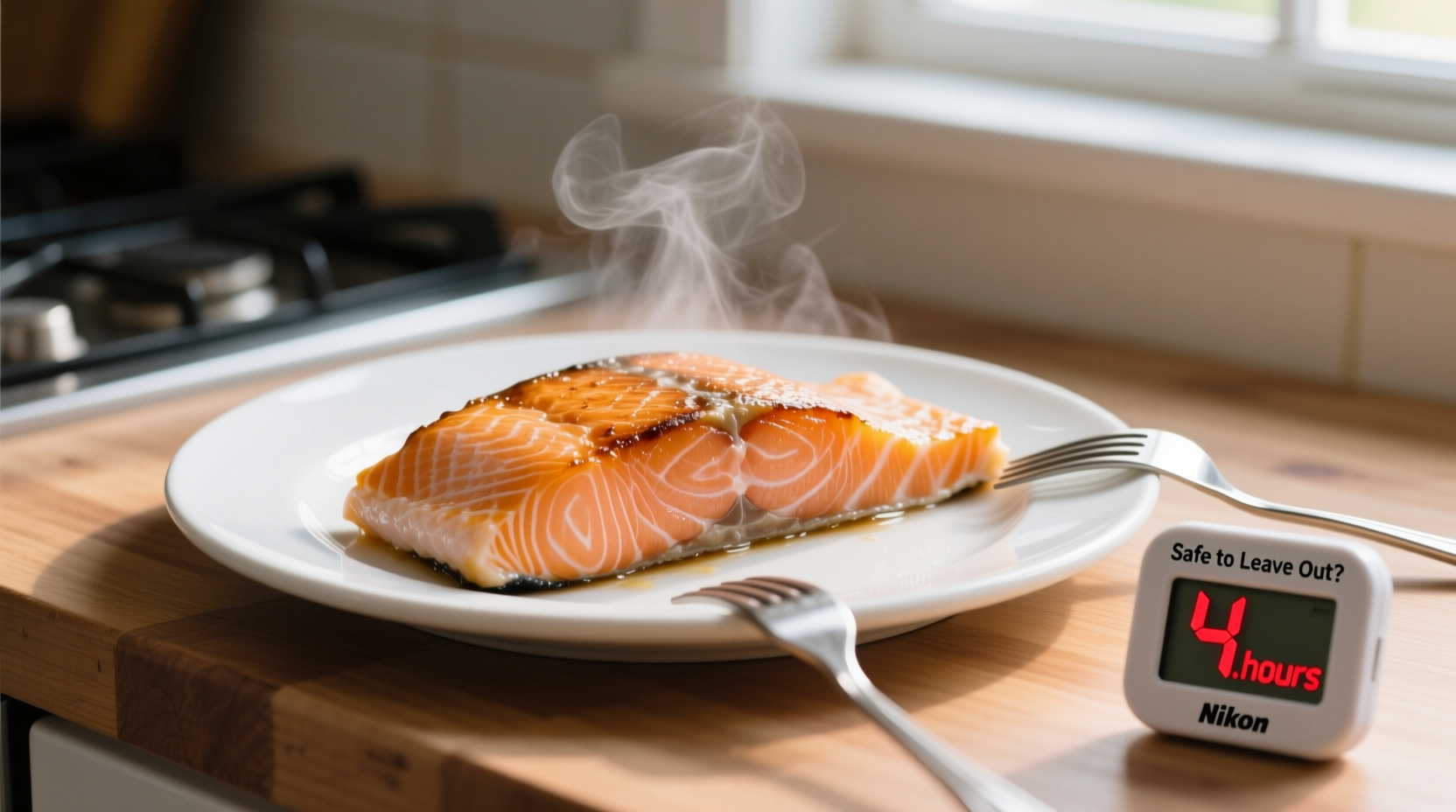Direct Answer: Cooked salmon should not sit out at room temperature for more than 2 hours. If the ambient temperature is above 90°F (32°C), limit exposure to just 1 hour. Beyond these timeframes, harmful bacteria like Listeria and Vibrio can multiply rapidly, increasing foodborne illness risk.
Have you ever hosted a gathering where cooked salmon sat out longer than planned? Or maybe you've wondered if that dinner left on the counter overnight is still safe? You're not alone. According to USDA data, improper food handling causes millions of foodborne illnesses annually, with seafood being particularly vulnerable. Understanding the precise time limits for cooked salmon isn't just about avoiding waste—it's crucial for protecting your health and your family's.
The Science Behind the 2-Hour Rule
When cooked salmon enters the "Danger Zone" (40°F to 140°F / 4°C to 60°C), bacteria multiply exponentially. At room temperature (70°F / 21°C), bacteria like Staphylococcus aureus can double every 20 minutes. Within two hours, a single bacterium can become over 16 million—enough to cause illness.
Seafood presents unique risks because it often contains Vibrio species that thrive in warmer temperatures. The FDA's Food Code specifically identifies cooked fish as a Time/Temperature Control for Safety (TCS) food requiring strict monitoring.

Temperature Timeline: When Cooked Salmon Becomes Unsafe
| Temperature Range | Maximum Safe Time | Bacterial Growth Risk |
|---|---|---|
| Below 40°F (4°C) | 3-4 days refrigerated | Minimal growth |
| 40°F-70°F (4°C-21°C) | 2 hours maximum | Moderate to high risk |
| 70°F-90°F (21°C-32°C) | 2 hours maximum | High risk |
| Above 90°F (32°C) | 1 hour maximum | Extreme risk |
This timeline comes from the USDA Food Safety and Inspection Service's evidence-based guidelines. Their research shows that at 98.6°F (37°C)—human body temperature—Bacillus cereus can reach dangerous levels in just 90 minutes.
Real-World Scenarios: What to Do When Timing Gets Tricky
Scenario 1: The Post-Dinner Dilemma
You've finished dinner but forgot to refrigerate leftovers. If less than 2 hours have passed since cooking, immediately refrigerate the salmon. Divide large portions into shallow containers (no deeper than 2 inches) to cool faster. Properly stored, cooked salmon remains safe for 3-4 days.
Scenario 2: Outdoor Events and Picnics
At outdoor gatherings above 90°F, use insulated containers with ice packs. The CDC reports that during summer months, foodborne illness cases increase by 33% due to improper temperature control. Keep cooked salmon in a cooler until serving, and return leftovers to cold storage within 60 minutes.
Scenario 3: The Overnight Accident
If salmon sat out all night (8+ hours), discard it immediately. No amount of reheating can destroy toxins produced by Staphylococcus bacteria after this timeframe. The Food and Drug Administration emphasizes: "When in doubt, throw it out."
How to Recognize Spoiled Cooked Salmon
Even within the 2-hour window, improper handling can cause spoilage. Check for these warning signs:
- Smell test: Sour or ammonia-like odor (fresh cooked salmon has mild ocean scent)
- Texture: Slimy surface or excessive moisture
- Color: Dull appearance or grayish tint instead of vibrant pink-orange
- Taste: Bitter or sour flavor (only test if other signs are absent)
Remember: Some dangerous bacteria don't produce noticeable changes. If time limits were exceeded, don't rely on sensory tests alone.
Proper Storage Techniques for Maximum Safety
Follow these steps to safely store cooked salmon:
- Cool rapidly: Place in shallow containers (max 2 inches deep)
- Refrigerate promptly: Within 2 hours of cooking (1 hour if hot)
- Storage temperature: Maintain refrigerator at 40°F (4°C) or below
- Freezing option: For longer storage, freeze in airtight containers (up to 3 months)
- Reheating: Heat to internal temperature of 165°F (74°C)
The National Center for Home Food Preservation confirms that proper cooling methods reduce bacterial growth by 75% compared to leaving food to cool at room temperature.
Special Considerations for Vulnerable Groups
Pregnant women, young children, elderly individuals, and immunocompromised people face higher risks from foodborne pathogens. For these groups, consider stricter guidelines:
- Reduce room temperature exposure to 1 hour regardless of ambient temperature
- Consume refrigerated leftovers within 2 days instead of 4
- Always use a food thermometer to verify internal temperatures
The American Journal of Clinical Nutrition reports that seafood-related illnesses disproportionately affect these populations, making extra precautions essential.











 浙公网安备
33010002000092号
浙公网安备
33010002000092号 浙B2-20120091-4
浙B2-20120091-4